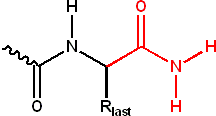Knochenmetastase — Klassifikation nach ICD 10 C79.5 Sekundäre bösartige Neubildung des Knochens und des Knochenmarkes … Deutsch Wikipedia
Collagene — Collagène Le collagène est une glycoprotéine fibreuse dont le rôle peut être comparé à une armature. Il s agit de la protéine la plus abondante de l’organisme et représente 1/4 de toutes les protéines de l organisme. Il est secrété par les… … Wikipédia en Français
Collagène — Fibres de collagène de type I provenant d un tissu pulmonaire de mammifère, observées au microscope électronique. Le collagène est une famille de protéines fibreuses, la matrice des tissus conjonctifs dans le règne animal. Ces protéines ont pour… … Wikipédia en Français
Procollagène — Collagène Le collagène est une glycoprotéine fibreuse dont le rôle peut être comparé à une armature. Il s agit de la protéine la plus abondante de l’organisme et représente 1/4 de toutes les protéines de l organisme. Il est secrété par les… … Wikipédia en Français
Distrofia muscular de Duchenne — Saltar a navegación, búsqueda Código CIE 9 MC: 359.1 OMIM 310200 DDB 3985 iier 1845 … Wikipedia Español
Exopeptidase — An exopeptidase is an enzyme produced in the pancreas that catalyses the removal of an amino acid from the end of a polypeptide chain. Exopeptidase cleaves the end of a polypeptide chain. Aminopeptidase, an enzyme in the brush border of the small … Wikipedia
Nutritional genomics — is a science studying the relationship between human genome, nutrition and health. It can be divided into two disciplines: Nutrigenomics: studies the effect of nutrients on health through altering genome, proteome, metabolome and the resulting… … Wikipedia
T-cadherin — also known as cadherin 13, H cadherin (heart) (CDH13) is a unique member of cadherin superfamily because it lacks the transmembrane and cytoplasmic domains and is anchored to the cells membrane through the GPI anchor. Classical cadherins are… … Wikipedia
Coagulation factor II receptor — Coagulation factor II (thrombin) receptor Rendering of F2R from PDB 1NRN … Wikipedia
MTHFD1 — Methylenetetrahydrofolate dehydrogenase (NADP+ dependent) 1, methenyltetrahydrofolate cyclohydrolase, formyltetrahydrofolate synthetase, also known as MTHFD1, is a human gene.cite web | title = Entrez Gene: MTHFD1 methylenetetrahydrofolate… … Wikipedia

